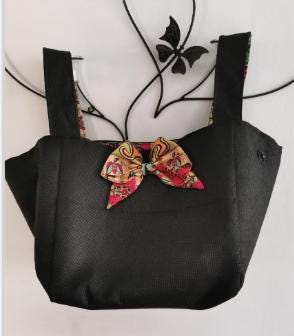Although the exact origin of the fabric bow is difficult to pinpoint, the concept of tying cloth for decorative and practical purposes goes back thousands of years.
Ancient civilizations, including the Egyptians, Greeks, and Romans, used fabric ties for both functionality and decoration. Togas and robes were often fastened with sashes and belts that might resemble early forms of the bow. While these early ties weren't "bows" in the decorative sense we know today, they laid the groundwork for what was to come. In ancient China and Japan, knots and ties held symbolic meaning.
Decorative knot-tying, such as the Japanese mizuhiki and Chinese pan chang knots, used cords and ribbons to form elaborate patterns. While not bows in the Western sense, these ornamental ties served similar purposes: they represented affection, good luck, and spiritual ideas. These cultures valued the aesthetics of tying objects with care and meaning, an ethos that echoes in our modern use of bows.
During the Middle Ages and into the Renaissance, fashion became increasingly ornate among Europe’s upper classes. Clothing was often adorned with laces, ribbons, and bows, not only to hold garments together but to showcase wealth and status. Ribbons made of silk and other fine materials were expensive, and wearing them demonstrated one’s social standing. By the 16th and 17th centuries, bows had become a fashionable detail in men’s and women’s clothing. In France, under the reign of Louis XIV, both genders wore elaborate outfits covered in ribbons and bows. The king himself was known for his luxurious attire, which helped popularize the bow as a decorative element in Europe. Small bows could be found on bodices, sleeves, shoes, and even in the hair.
By the 18th century, the bow had become particularly associated with femininity. Rococo fashion, which emphasized extravagance and romanticism, embraced the use of bows in women’s gowns and accessories. Bows were often placed in symmetrical arrangements on dresses, hats, gloves, and shoes, contributing to an overall image of delicacy and charm. The Victorian era continued this tradition, with fabric bows appearing prominently in women's attire. During this time, bows also became more symbolic. A bow on a bonnet or around the neck could signify modesty, gentleness, or romantic interest. Hairstyles of the period often featured decorative bows made of ribbon, lace, or velvet. It was also during the 19th century that the modern idea of the bow as a fashion accessory began to solidify. Unlike earlier periods where they were sewn into garments, bows became detachable and interchangeable, used to accessorize as trends changed. This flexibility helped them stay in fashion well into the 20th century.
As fashion evolved through the 20th century, so did the use of the bow. From flapper headbands in the 1920s to the large, expressive bows of the 1980s, the accessory remained relevant by adapting to changing tastes. Designers like Coco Chanel, Christian Dior, and Elsa Schiaparelli used bows in innovative ways, elevating them from simple decorations to high-fashion statements. Bows also found a place in casual wear. From school uniforms to everyday hair accessories, bows became a staple for children and adults alike. The iconic Minnie Mouse bow, introduced by Disney in the 1920s, helped cement the bow as a symbol of innocence and playfulness. In the late 20th and early 21st centuries, bows took on new forms and meanings.
Over time, the fabric bow has come to symbolize a variety of things depending on the context. In gift wrapping, a bow signifies that something is special, wrapped with care and love.
In fashion, it often represents beauty, elegance, and softness. A bow tied neatly at the neck or waist can suggest tidiness, while an oversized bow may evoke playfulness or even rebellion. Bows also hold deeper cultural meanings. In some East Asian wedding traditions, red bows symbolize prosperity and good luck. In the West, pink or blue bows on gifts or decorations have come to signify the gender of a baby during celebrations like baby showers and gender reveals. The versatility of the bow—both as an object and as a symbol—has helped it endure across centuries and cultures.


